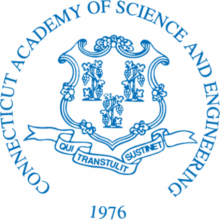CASE Member Distinguished Service Award
Laura B. Grabel 2020

Dr. Grabel was elected to the Connecticut Academy of Science and Engineering (2007), to its governing council in 2012, and most recently as vice president, president, and past president, each for two-year terms (2014 to present). Additional Academy activities included her service as a member of the Academy’s peer review committee for the Biomedical Research Grants Project for the Connecticut Department of Public Health (2009 – 2013), as a keynote speaker on stem cell research at the Academy’s 38th Annual Meeting and Dinner (2013), and as a contributor to the Academy’s Science Matters! Series in partnership with the Hartford Courant News in Education Series. Professor Grabel is recognized for all her service on behalf of the Academy, but particularly for providing exceptional leadership as president of the Academy during a period of unique challenges.
As a leading expert in stem cell research, Professor Grabel has advised state and national governments, as well as public and private funding agencies, on the efficacy and promise of stem cell research. Her area of research includes the neurogenesis of embryonic stem cells, transplantation of embryonic stem cells derived neural stem cells and neurons in a mouse model of temporal lobe epilepsy, and cell migration in early mammalian development. She joined Wesleyan University in the biology department in 1984 after a postdoctoral fellowship for the National Institutes of Health at the University of California, San Francisco. At Wesleyan, Grabel served in various positions including as the Fisk Professor of Natural Science, director of graduate studies, chair of the biology department, and dean of natural sciences and mathematics prior to being named the Lauren B. Dachs Professor of Science and Society. She is the author or co-author of numerous, highly cited academic articles and a book on ethical stem cell research. Grants were awarded for her research from the NIH, American Cancer Society, the Donaghue Foundation, the National Science Foundation, Mellon, and Sonnenblick Cardiac Research Foundation. She served as Co-Director of the state-funded Human Embryonic Stem Cell Core Facility located in Farmington at the UCONN Health Center.
In 2019, Grabel was recognized as a Women of Innovation by the Connecticut Technology Council for her science, technology, engineering, and mathematics initiatives that support women in science. Examples cited include a course she taught on the biology of women at York Correctional Institution and collaborating with professional choreographers to convey complex scientific concepts through movement and dance in and outside of the classroom. Additional honors include NIH New Investigator and Career Development Awards. She is a Fellow of the American Association for the Advancement Science (AAAS), served as AAAS’s Biology Section Chair (2002-2005), and on the program committee (2002-2005). Professor Grabel has participated in numerous study sections and outside review panels, advisory panels, and has served as a journal reviewer and as an invited speaker nationally and internationally.
Grabel graduated from Brandeis University in 1972 with a bachelor’s in biology and earned a PhD in biology.
Regis Matzie 2020
President, RAMatzie Nuclear Technology Consulting, LLC
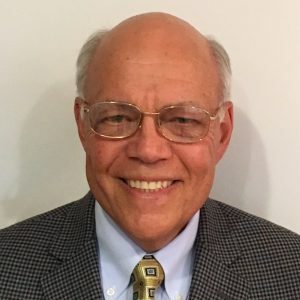
Dr. Matzie was elected to the Connecticut Academy of Science and Engineering in 2006, and to its executive committee as secretary for two, four-year terms from 2012 to 2020. Additional Academy activities included his service as a CASE Study Committee Member on the Academy’s Advances in Nuclear Power Technology (2010 – 2011) study and as the keynote speaker presenting on nuclear power at the Academy’s 36th Annual Meeting and Dinner (2011). He has volunteered to serve as chair of the Academy’s ad hoc Development and Advocacy Committee, and in this position will remain in a leadership role following completion of his 2nd term as secretary in June 2020. The Academy is a service-oriented organization, as well as honorific, with a focus on providing the people of the state of Connecticut with advice on scientific and technology-related issues. Dr. Matzie is recognized for exemplifying the service-oriented responsibility of membership.
Dr. Matzie was responsible for all Westinghouse research and development undertakings and advanced nuclear plant development at Westinghouse just prior to his retirement. Previously, Dr. Matzie had served in various roles related to the new Westinghouse light water reactors and was responsible for Westinghouse’s replacement steam generator projects and dry spent fuel canister fabrication projects. He became a senior vice president for Westinghouse following its purchase of the nuclear businesses of Asea Brown Bavari (ABB), where he was vice president of nuclear systems for ABB Combustion Engineering (ABB CE) Nuclear Power. With 125+ technical papers and reports, he is recognized for a career devoted to the development of advanced nuclear systems and advanced fuel cycles, including the Korea Standard Nuclear Plant, the System 80+ Advanced Light Water Reactor, the Safe Integral Reactor, the Advanced Passive Plant, the International Reactor Innovative and Secure, and the Pebble Bed Modular Reactor. Additionally, he is noted for his dedicated work on thorium, extended burnup, plutonium, and spectral shift fuel cycles, as well as for his expertise in the economics of nuclear power and international technology transfer.
Awards and honors include the Westinghouse Lifetime Achievement Award, the American Society of Mechanical Engineers John N. Landis Medal, and the American Nuclear Society Walter H. Zinn Award. Dr. Matzie has a long history of public service, including as a member of the KEPCO International Nuclear Graduate School International Advisory Board, Texas A&M University Nuclear Engineering Advisory Council, US Department of Energy’s Nuclear Energy Advisory Committee, and chair of its international subcommittee, Canadian National Laboratory Science Advisory Board, Executive Advisory Board for Kairos Power, Argonne National Laboratory Nuclear Review Committee, and Atomos Nuclear and Space Board of Advisors. He is a consultant to MIT, the University of California – Berkeley, the University of Wisconsin, the Idaho National Laboratory, and the Pacific Northwest National Laboratory.
Matzie graduated from the US Naval Academy with a BS in physics, served for 5+ years in the US nuclear submarine program, and then continued his education at Stanford University earning an MS and PhD in nuclear engineering.
Myron Genel 2017
Clinical Professor of Nursing
Yale School of Medicine
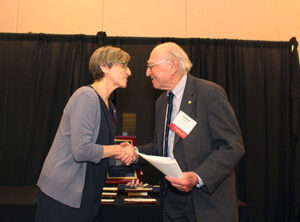
Myron Genel was elected by the Academy’s Governing Council to receive the Distinguished Service Award in recognition of outstanding contributions as a Member of Council, Officer, and Executive Editor of the Bulletin.
Elected to CASE in 1992, Dr. Genel has served on several study committees for the Academy, including the Connecticut Disparity Study (2013-16), Independent Monitor Report: Implementation of UCHC Study Recommendations (2009) and A Needs-Based Analysis of the UConn Health Center Facilities Plan (2008). Additionally, he served for a total of 12 years as an Elected Council Member (2000–06), and Vice President/President/Past President (2006-12). Beginning in Spring 2016, Dr. Genel is serving as the 1st CASE Bulletin Executive Editor for Medicine, providing expert advice and editing support for each issue and assisting in the selection of feature articles. In this role, he also participates in quarterly Council Meetings.
A graduate of the University of Pennsylvania Medical School, Dr. Genel joined the Yale School of Medicine in 1971 and was Associate Dean, Government and Community Affairs from 1985 to 2004. Previously he was chief of the pediatric endocrinology section and program director of the Children’s Clinical Research Center.
Dr. Genel has served at the interface between biomedical research, clinical endocrinology, and public policy in many capacities. He was a member of the National Children’s Study Federal Advisory Committee (2005-08), the Health and Human Services Secretary’s Advisory Committee on Human Research Protections (2006-09), and a charter member of the Institute of Medicine’s Clinical Research Roundtable (2000-04). A founder of the Connecticut Stem Cell Coalition, Dr. Genel also served as a member of Connecticut’s Stem Cell Research Advisory Committee. He has also been a consultant to the International Olympic Committee’s Medical Commission on issues relating to gender identity in elite athletic competition.
For twenty-seven years, beginning in 1984, Dr. Genel directed the public affairs activities of three major pediatric academic and research societies: American Pediatric Society, Association of American Medical School Department Chairs, and the Society for Pediatric Research. He has also served as chair of the American Medical Association’s (AMA) Council on Scientific Affairs; the governing council of the AMA Section on Medical Schools and the Association of American Medical Colleges (AAMC) Council of Academic Societies. A Distinguished Service member of the AAMC, Dr. Genel has received a number of awards including, the Distinguished Service Award from the Society for Pediatric Research, the Joseph W. St. Geme, Jr. Leadership Award from the Federation of Pediatric Organizations, and the President’s Award for Distinguished Service from the American Academy of Pediatrics. He also currently serves on the board of directors of the Stepping Stones Museum for Children, Norwalk, and on the Connecticut Commission of Women Children, and Elderly.
Edward Monahan 2016
Retired Director, Connecticut Sea Grant Program
University of Connecticut
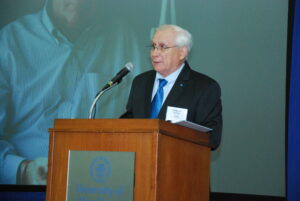
Edward C. Monahan was elected by the Academy’s Governing Council to receive the Distinguished Service Award for his outstanding leadership within the Academy, specifically for significant contributions through his 12 years of service as the CASE Bulletin Executive Editor ― Science.
Monahan was elected to the Academy in 1999 and has served as Executive Editor ― Science from 2004 to 2016. He is the longest-serving Executive Editor in the history of the publication, having exceeded the previous record of 10 years. He will retire from this role effective spring 2016. During his service, he provided expert scientific and technical advice, assisted in the selection of the feature articles, and reviewed each issue for high quality and to ensure that information of interest to the Bulletin readership was included and understandable to individuals with a wide range of backgrounds. In his capacity as Executive Editor, Professor Monahan also regularly attends and participates in quarterly meetings of the Academy’s Governing Council. Additionally, he has served as a study committee member on the CASE – Long Island Sound Symposium: A Study of Benthic Habitats (2004).
Ed received a Ph.D. from MIT, a DSc from the National University of Ireland, and is a Fellow of both the American Meteorological Society and the Acoustical Society of America. His research activities continue to center on investigations of those physical processes involved in the air-sea exchange. He has greatly enhanced the understanding of the role of bubbles in mediating the air-sea exchange of sea salt, moisture, heat, and gases, and while doing so has pointed out the significance of these air-sea interactions in the maintenance of the climate on earth.
For 20 years, he was the Director of the Connecticut Sea Grant Program and in retirement, currently serves as a Chairman of the Southeastern Connecticut Water Authority.
George ‘Bob’ Wisner 2015
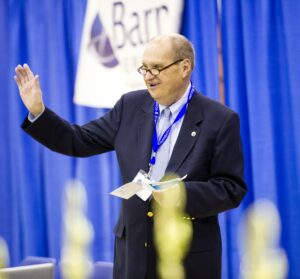
George ‘Bob’ Wisner was elected by the Academy’s Governing Council to receive the Distinguished Service Award for his outstanding leadership within the Academy and for his exceptional contributions in support of the Academy’s mission through dedicated and outstanding leadership of the Connecticut Science and Engineering Fair (CSEF).
Wisner was elected to the Academy in 2007 and has served on three Study Committees: Rail Energy (2014); Weigh Station Technologies and Practices (2008); and Feasibility of Utilizing Fuel Cells to Generate Power for the New Haven Rail Line (2007). In 2010, he was elected to fill a vacancy on the Academy’s Council through 2014 and for a full term in 2015.
As Chairman and Director of CSEF, Wisner initiated the Urban School Challenge (USC) with support from the Academy’s Endowment Fund. The USC recognizes a middle school and high school student from an urban district. A past Connecticut Science Fair competitor, his volunteer support of CSEF began in the early seventies when his former 7th-grade science teacher asked him to become involved with the Advisory Council. Wisner became chairman of the CSEF board of directors in 1974 and CSEF Director in 1989.
While an electrical engineering student at UConn, Wisner joined the United Technologies Research Center (UTRC) – at the time known as United Aircraft Research Laboratories – as a summer intern in 1960 and continued full time as a research engineer upon graduation. At UTRC, he conducted research on high-energy lasers, adaptive optics, and power electronics. His research and product development efforts produced 15 patents. Wisner also led a research team in the development of an automated clinical gait analysis system used to evaluate children with cerebral palsy. Wisner finished the last four years of his UTC career at Otis Elevator as engineering manager for elevator drives, retiring in 1999. In addition to his science fair duties, he works as the Technology Director for Barker Mohandas-Vertical Transportation Consultants.
Anthony J. DeMaria 2013

Tony DeMaria is a charter member of the Academy. He was elected to the governing council in 1992; served as the Academy’s fourth president from 1994 to 2000, and held the post of past president from 2000 to 2004.
During his presidency, DeMaria served as chair of the strategic planning committee that developed the Academy’s first long-range plan, providing a foundation for the academy as it is today. He also oversaw the first committee to recommend candidates for the Connecticut Medals of Science and Technology and in 2004, DeMaria himself was awarded the Connecticut Medal of Technology for his groundbreaking laser research.
DeMaria and his family came to the United States from Italy when he was just five years old. Growing up in Waterbury, he worked construction jobs to pay for his education. Always fascinated by science, DeMaria received a bachelor’s degree in electrical engineering from UConn. He worked at Anderson Laboratories while pursuing a master’s degree in science at Rensselaer Polytechnic Institute in Hartford. DeMaria went on to earn a Ph.D. in electronics and physics at UConn. His 1965 thesis led to his greatest breakthrough in generating picosecond laser pulses, whose time durations lasted the time it takes light to travel the thickness of a sheet of paper. These ultrafast laser pulses made it possible to probe atoms and molecules and measure their relaxation rates, a discovery that led to overnight fame.
Dr. DeMaria had a 33-year career with the United Technologies Corporation before co-founding DeMaria ElectroOptics Systems, LLC (DEOS) in 1994 for the purpose of transferring laser radar technology to commercial use. In 2001, DEOS was acquired by Coherent, Inc., with DeMaria serving as chief scientist until his retirement in 2012. Coherent employs several hundred people in Bloomfield, Connecticut.
Dr. DeMaria holds 56 patents. He is a member of the National Academy of Engineering (1976) and the National Academy of Sciences (1997) and a past president of the Optical Society of America and SPIE, the International Optics Society. He also served as Editor of the IEEE Quantum Electronics Journal for 10 years.
Michael J. Werle 2011
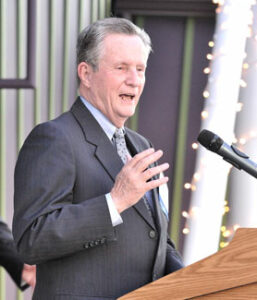
Dr. Michael J. Werle was elected to the Academy in 1994 and began his involvement early on serving as chair of the Academy’s Human Resources Technical Board beginning in 1995 through 2002. Werle went on to serve as executive director of the Academy from July 2000 through June 2002. From July 2002 through June 2008, Werle was elected to consecutive 2-year terms as Vice President, President, and Past President. In these roles, his leadership was critically important in guiding and establishing a solid financial foundation for the Academy through a challenging transition period.
International technology development and management expert, Werle is Founder and Senior Technical Advisor of FloDesign Wind Turbine Corp., a Founder and President of FloPropulsion Systems LLC, a member of Connecticut’s Board of Governors for Higher Education, and a member of Connecticut Innovations’ Technical Advisory Board.
In 1995 he retired from 18 years of service with United Technologies Corporation (UTC) as the Director for International and External Programs in the Office of Science & Technology. He previously served as the Head of the Gas Dynamics and Thermophysics Laboratory of United Technologies Research Center. Prior to that for 10 years he was a Professor of Engineering at the University of Cincinnati and Virginia Polytechnic Institute.
Werle earned both his bachelor’s and doctorate degrees in aerospace engineering from Virginia Polytechnic and State University. He began his career as a researcher in the US Navy. Werle has over 20 patents, has published over 40 papers in referred journals, and served as an advisor to 14 Ph.D. graduates. He is a Fellow of the American Institute of Aeronautics and Astronautics. Past honors include the 2003 Public Service Award from the State of Connecticut.
David M. Wetstone 2010
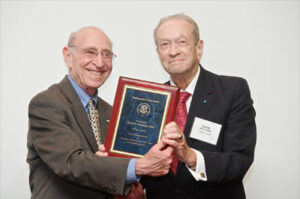
Founding member Dr. David M. Wetstone was honored with the first Distinguished Service Award in recognition of his many years of dedicated service to the Academy. Wetstone served as the first secretary of the Academy and functioned as chief operating officer from the Academy’s founding in 1976 until 2001. In 1966, Wetstone and fellow Connecticut Science Fair colleague Chuck Stroebel were discussing ways to support the Science Fair when they first conceived of the idea of a state science academy. Ten years later in 1976, a Special Act creating the Academy was signed into law by then-Governor Ella Grasso.
In his 25 years overseeing Academy operations, Wetstone edited, published, and contributed to over 150 reports on science policy to the Connecticut legislative and executive branches and others.
From 1959 to 1975, Wetstone worked for United Aircraft Research Laboratories (now United Technologies Research Center), as a senior research scientist in plasma physics and later as a liaison with the U.S. academic research community. In 1975, he began consulting in management information systems and data modeling and, later, in science-based public policy in other states.
A chemistry and physics graduate of the University of Connecticut, Wetstone earned his Ph.D. in physical chemistry from the Polytechnic Institute of Brooklyn. His memberships include the American Chemical Society, the American Physical Society, Sigma Xi, Scientific Research Society of America (RESA), of which he was the founder of the Hartford branch, and Phi Lambda Upsilon. From 1966 to 1976, he served on the Board of the Science Museum in West Hartford, with three years as Chairman, which included oversight of the construction and opening of the planetarium.

